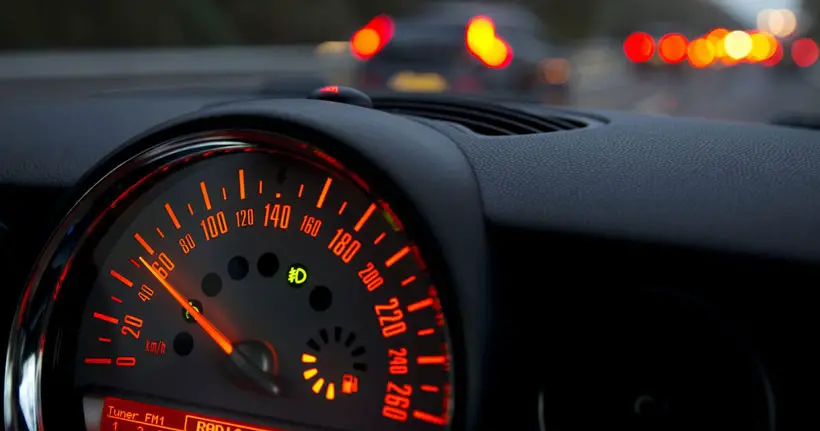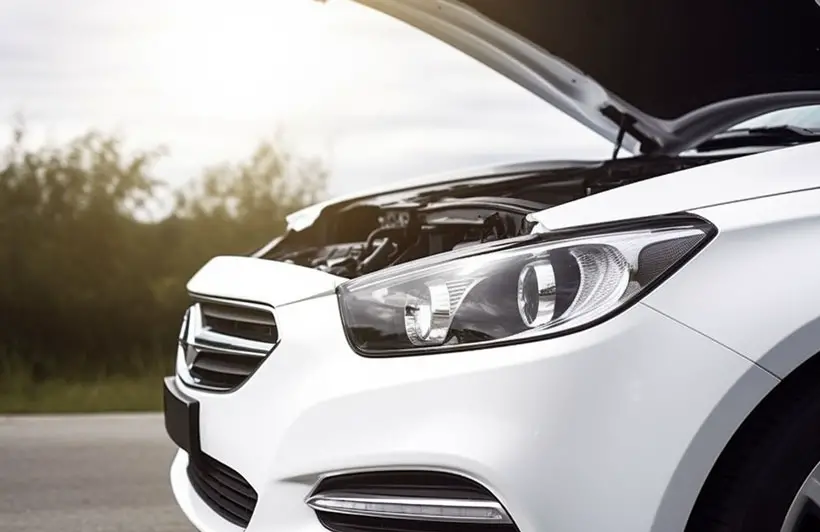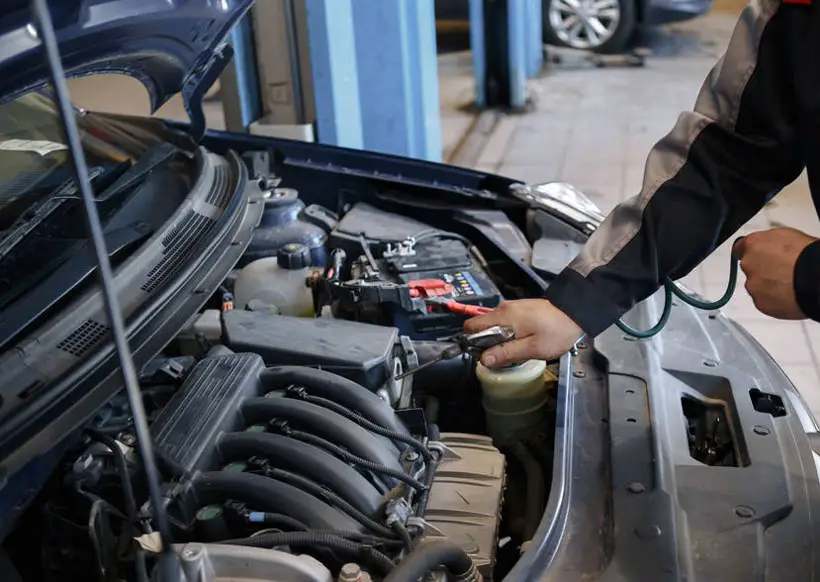Internal combustion engines in cars produce extreme heat. The cooling system of the car is responsible for dissipating the heat and keeping the temperature under control. But sometimes, the system fails for several reasons, and the car starts to heat up.
Then, the car overheating signs: how to identify and address? You might see white smoke coming from under the hood in such cases. Irregular noises from the engine are also common. The engine can misfire, and the temperature warning light will appear on the dashboard.
To tackle this disaster, you must know car overheating signs and how to address them in a proper way. Let’s tell you everything in detail.
Warning Lights
In older vehicles, you might see a variety of warning lights on the dashboard. Among them is a temperature warning light, which lights up when the engine temperature is too high. It will look like a thermometer, or there can be a simple text, such as TEMP, to show the warning. Here is a quick explanation of warning lights.
- Whenever the engine crosses its maximum tolerable temperature, the light will come up on the dashboard.
- In most cases, the light will turn on slightly before the maximum limit so that you have enough time to take action. And it can be the first sign of overheating as you are inside the car while driving.

What to Do When Warning Light Comes On?
As soon as you see the temperature warning light come on, you need to follow these steps to prevent major damage from happening.
Step 1: Slow the vehicle down and pull over in a safe place. Turn the engine off.
Step 2: Don’t touch the car yet. Let it sit for about 30 minutes to cool down completely. Then, open the hood.
Step 3: Wear thick gloves or wrap your hands in a towel. Twist open the coolant reservoir cap and check the coolant level. Be very careful while doing this; otherwise, you may burn your hands.
Step 4: If the coolant level is low, topping it up is the best solution. But if you don’t have extra coolant in the car, add some water to the radiator. It is a temporary solution to help the cooling system reduce the engine’s temperature.
Step 5: Drive to a repair shop and get the coolant refilled. You might also need to check other things we will discuss in a bit.
Steam
It is disastrous to see white smoke or steam coming from the engine. In most cases, engine overheating issues are the main causes of steam. But there can also be leaks in the cooling system that let coolant or water drop onto hot metal surfaces.
- First of all, engines usually operate at 200-220 degrees Fahrenheit. Various components work together to keep the engine heat at an optimal level. But when these components can’t work properly, steam can come out of the hood.
- Also, if the radiator is dirty, it may generate smoke when the engine is hot.
- A low coolant level or bad water pump can also be responsible for the problem.
So, you need to pull the car over and check it thoroughly to identify the problem.

What to Do When You See Steam?
Steaming can indicate serious problems in your car’s cooling system. You need to follow the steps below when you see steam.
Step 1: Turn the AC off. Then, turn the heater on and set it to the maximum. It will draw some heat from the engine. Open all windows so that air can pass through the cabin.
Step 2: Pull over in a safe place and shut the engine off.
Step 3: Let the car cool down completely and open the hood.
Step 4: Check the radiator for dirt. If it can’t dissipate heat efficiently, steam can be generated. Clean the radiator.
Step 5: Check the coolant level and refill it if it is too low.
Step 6: Check the hoses for leaks. If you don’t have tools in the car to repair leaks, you should take the vehicle to a repair shop immediately.
Strange Noises
You get familiar with the noises an engine usually makes. So, it is easy for experienced ears to detect strange noises from the engine. Sometimes, you may hear a ticking or thumping noise from the engine. Both noises are indications of an overheated engine. Read the following explanation of strange noises to identify them easily.
- The ticking noise is generated when the engine lubricant is too hot. Extreme heat reduces the viscosity of the lubricant so much that it can’t properly lubricate engine components. Thus, you might hear that ticking noise. If it prevails, engine components can be seriously damaged.
- Likewise, faulty thermostats cause another strange noise from engines. They are responsible for managing the coolant flow inside the cooling system. It monitors the temperature and lets the coolant flow only when the engine reaches a specific temperature.
But if it fails to regulate the flow valves, the radiator won’t receive enough coolant. As a result, the engine will overheat, and a thumping noise can come from the engine.

What to Do When You Hear Strange Noises?
If you hear these noises while driving, you need to take a few steps. Check them out.
Step 1: Slow the car down and pull it over. Let the car cool down for at least 30 minutes.
Step 2: Once the engine cools down, the viscosity of the lubricant will increase. Then, you can turn the engine on and lightly rev the engine to lower the viscosity. It will help the lubricant flow through the system and lubricate components perfectly.
Step 3: Check the level of the lubricant and refill it if necessary.
Step 4: Checking the thermostat for faults might not be possible on the way. It requires using thermometers and starting the car. You should take the car to a repair shop and check the thermostat.
Engine Misfires
Once you fail to address car overheating signs, it damages engine components. As a result, the engine misfires while starting or driving. So, the explanation of engine misfires is necessary here. Several reasons can generally cause it.
- The first is a leak in the cooling system. For example, air can enter the cooling system if there is a leak in the hoses. Consequently, the engine will overheat and misfire.
- And the second reason is a blown head gasket. When the engine temperature crosses the maximum limit, it starts melting different components. When the head gasket is blown, the engine will misfire continuously.
- Another common reason behind car engines misfiring is worn timing belts. These belts control the engine’s timing. If the belt becomes too loose due to wear, it can slip sometimes. Thus, the timing of cylinders opening or closing won’t be accurate. And the engine will start misfiring.

What to Do When You Experience Engine Misfires?
A misfiring engine can be a big hassle, especially when driving in the middle of nowhere. Still, you can take some steps to fight the problem. Here you go.
Step 1: Pull the car over as soon as you experience misfiring. Let the car cool down for at least 30 minutes.
Step 2: Open the hood and remove the radiator cap.
Step 3: Check the coolant level. If it is low, you need to top it up.
Step 4: Then, check the radiator and hoses for leaks. If there are leaks, you can smell the drippings of coolant around. And there will be small puddles below the car.
Step 5: Fixing leaks and checking head gaskets or timing belts can be difficult. These require specialized tools and experienced mechanics to fix. So, you should take the car to a repair shop.
Step 6: If the engine starts and the car is driveable, you should drive to a repair shop directly. But if the engine stalls, you need to call a tow truck.
What to Do If Your Car Shows Signs of Overheating?
As soon as you see signs of overheating, you need to follow a standard procedure to mitigate the issues. Here is a detailed process on how to do that.

1. Pull Over Safely
If you see signs of overheating while driving on a highway, you shouldn’t press the brake too hard. This is because faster vehicles coming from behind can hit you badly. Slow down the vehicle and pull over on the right side of the highway. On city roads, you can try to pull over somewhere less crowdy.
2. Turn Off the Engine
After pulling over, you must open the windows and turn the engine off. Get out of the car after turning the engine off and maintain a bit of distance from the car.
3. Allow the Engine to Cool
Don’t touch the hood or anything else right away. Let the car cool down for at least 30 minutes, but allowing it one hour to cool down is better. Only then can you open the hood to identify the problem?
4. Check Coolant Levels
After opening the hood, you will find the coolant reservoir on the front of the engine bay. Carefully open the reservoir cap and observe the coolant level. Markings on the reservoir wall should help you check the level. If the coolant level is low, you should top it up.
5. Inspect the Radiator and Hoses
Radiators have hoses on the upper and lower parts of them. You should squeeze all the hoses firmly. If the hoses feel rigid, they are working fine. But if it feels very hard, the hose has probably hardened due to aging.
You should replace that hose. If there is any swollen or spongy hose, that should be replaced too. And check if there are any drippings of coolant from the ends of the hoses.

6. Inspect the Thermostat
Though you should get this checked in a repair shop, you can do it on your own with a thermometer. Take the temperature reading of the engine block and then the upper radiator hose.
Start the car and idle it for some time. Take another reading at these points. If the engine block temperature doesn’t change, the thermostat is faulty.
7. Inspect the Fan Belt
Squeeze the fan belt to check if it’s brittle. You should also pinch and twist the belt and inspect for signs of cracks. Notice if there is any slick or glazed part on the belt. If so, the fan belt should be replaced.
8. Inspect the Water Pump
When you wiggle the water pump pulley, it should be firm with no movement of the pulley. The water pump might not work properly if there is any movement or the pulley feels squishy. Take this to an experienced mechanic for replacement.
9. Seek Professional Help If Necessary
Situations like a low coolant level or dirty radiator can be solved on your own. But when you need to replace the head gasket or timing belt, you must take the car to a repair shop. And if the car isn’t driveable, you must call for tow trucks.
Preventive Maintenance Tips for Avoiding Car Engine Overheating
Maintaining the car regularly is much better than facing overheating issues midway. Here are some preventive maintenance tips to avoid car engine overheating.

Regular Maintenance
Keeping all components maintained is the best way to prevent overheating. You should regularly check components like drive belts, radiator caps, etc.
Coolant System Checks
It includes checking the coolant level regularly. Besides routine checks, you should check the cooling system before going on a long drive. The radiator should also be flushed periodically.
Monitoring Temperature Gauge
The temperature gauge on the dashboard shows the engine temperature. It has H and C markings to show hot and cool. You should always keep an eye on the gauge and not let it rise over normal.
If you’re experiencing car overheating signs and are puzzled by a temperature gauge that is rising but the car is not overheating, we suggest reading our articles on temperature gauge rising but car not overheating and how to check your car’s temperature gauge. The article on temperature gauge rising but car not overheating explores potential reasons for this issue and provides guidance on what to do next. Additionally, our article on how to check your car’s temperature gauge offers step-by-step instructions on monitoring and interpreting the temperature gauge readings to ensure your engine stays within a safe range.Conclusion: Addressing Car Overheating Signs to Avoid Costly Engine Repairs
If you delay addressing car overheating signs, they can cause irreversible damage to the engine. Even if you can repair the engine, it will cost a fortune. So, wise car owners will always emphasize checking the symptoms and solving the issues right away.
In this guide, we discussed some common signs of car overheating and provided ways to check the reasons. It will help you identify the problem if your car shows any of these signs. Don’t let these signs go unchecked to protect your car from serious damage.
